Types of Flexible Pipes
Flexible pipes are specialized piping systems designed for quick and easy installation across diverse applications. Made from various materials including plastic and metal, they can bend and curve around obstacles without compromising structural integrity or causing leaks. This flexibility makes them ideal for installations with space constraints or complex routing requirements around equipment and fixtures.
Industry Insight: The global flexible pipe market is projected to grow at a CAGR of 4.2% between 2021-2026, driven by increased demand in oil & gas, water management, and construction sectors.
Flexible Gas Pipe
Designed specifically for natural gas and propane distribution in residential and commercial settings. Typically constructed from corrugated stainless steel, these pipes offer:
- Simplified installation when connecting gas appliances like ovens and water heaters
- Available in multiple diameters to accommodate varying gas flow requirements
- Superior corrosion resistance for both above-ground and underground applications
- Compliance with strict safety standards for combustible gas transport
Best for: Residential gas appliance connections, commercial heating systems
HDPE Pipe
High-Density Polyethylene (HDPE) flexible pipes offer exceptional strength-to-density ratios and are widely utilized in:
- Municipal water distribution networks
- Wastewater treatment facilities
- Natural gas distribution systems
- Agricultural irrigation infrastructure
Their flexibility enables installation in challenging terrains while reducing support structure requirements in trenchless applications. HDPE pipes effectively absorb ground movements and vibrations, minimizing pipeline failure risks.
Best for: Underground utilities, high-pressure water systems
Drainage Pipe
Flexible drainage pipes serve residential and agricultural water management needs. Constructed from durable plastics, they're available in:
- Perforated designs for water collection and soil drainage
- Non-perforated variants for directed water transport
Their flexibility simplifies installation in various drainage systems including surface runoff management, subsurface drainage networks, stormwater control, and irrigation systems. They resist corrosion and root intrusion for sustained performance.
Best for: Landscape drainage, agricultural fields, foundation drainage
Poly Pipe
Polyethylene pipes offer versatility across water distribution, irrigation, and gas transport applications. Key advantages include:
- Simplified installation with the ability to navigate obstacles
- Reduced fitting requirements, minimizing potential leak points
- Available in various diameters and pressure ratings
- Chemical corrosion resistance and lightweight construction
Best for: Potable water systems, irrigation networks, low-pressure applications
Flexible Metal Conduit (FMC)
Metal-constructed flexible pipes primarily used in electrical installations to route and protect wiring. FMC offers:
- Easy installation in complex layouts and confined spaces
- Material options including galvanized steel, stainless steel, and aluminum
- Varying degrees of corrosion resistance depending on material selection
- Durability in demanding industrial, commercial, and residential environments
Best for: Electrical wiring protection, industrial machinery connections
Flexible Pipe Type Comparison
| Pipe Type | Primary Materials | Common Applications | Pressure Rating | Lifespan |
|---|---|---|---|---|
| Flexible Gas Pipe | Corrugated Stainless Steel | Gas appliance connections | Medium-High | 25-30 years |
| HDPE Pipe | High-Density Polyethylene | Water/gas distribution | High | 50+ years |
| Drainage Pipe | PVC, Polyethylene | Water management | Low | 20-30 years |
| Poly Pipe | Polyethylene | Water/irrigation systems | Medium | 30-50 years |
| FMC | Steel, Aluminum | Electrical wiring protection | N/A | 20-40 years |
Specifications of Flexible Pipes
Flexible pipes are manufactured to diverse specifications to accommodate various industrial and residential requirements. Understanding these technical specifications is crucial for selecting the appropriate pipe type for specific applications.
Key Specifications
-
Material Composition
Flexible pipes can be constructed from thermoplastics (PVC, HDPE, PP), metals (stainless steel, copper, aluminum), or composite materials combining multiple layers for enhanced performance. Each material offers unique characteristics regarding flexibility, strength, and chemical resistance.
-
Diameter Specifications
Available in internal diameters ranging from 6mm to 3000mm depending on application requirements. Larger diameters facilitate higher volume transport, while smaller diameters are suitable for applications with lower flow requirements or space constraints.
-
Pressure Rating
Flexible pipes are engineered to specific pressure tolerances, typically measured in PSI, bar, or MPa. High-pressure pipes (commonly HDPE and metal variants) can withstand 150+ PSI, while low-pressure applications might utilize pipes rated for 40-60 PSI.
-
Length Options
Available in coiled lengths from 3m to 500m+ for continuous installation, reducing connection points that could potentially leak. Custom lengths can be specified for particular installation requirements.
-
Temperature Resistance
Different materials offer varying temperature tolerances:
- Standard PVC: -5°C to 60°C
- CPVC: Up to 93°C
- Metal pipes: Often exceeding 200°C
- Specialized PTFE pipes: -73°C to 260°C
-
Chemical Resistance
Pipes are engineered to resist specific chemicals based on application requirements. PTFE offers broad chemical compatibility, while HDPE resists most acids and bases. Stainless steel provides excellent resistance to oxidizing agents.
-
Application-Specific Design
Purpose-built variations include:
- Potable water certified pipes (NSF/ANSI 61 compliant)
- Food-grade pipes for beverage industry
- High-abrasion resistant pipes for slurry transport
- UV-resistant pipes for outdoor applications
Material Properties Comparison
| Property | PVC | HDPE | Stainless Steel | PTFE |
|---|---|---|---|---|
| Flexibility | Moderate | High | Low-Moderate | Moderate |
| Chemical Resistance | Good | Excellent | Very Good | Outstanding |
| Temperature Range | -5°C to 60°C | -40°C to 60°C | -200°C to 540°C | -73°C to 260°C |
| Pressure Rating | Low-Medium | Medium-High | High | Medium |
| UV Resistance | Poor | Good with additives | Excellent | Excellent |
Maintenance of Flexible Pipes
Proper maintenance extends the operational lifespan of flexible pipes while ensuring optimal performance and safety. Implementing a comprehensive maintenance program helps identify potential issues before they become critical failures.
Maintenance Insight: Approximately 75% of pipe failures are preventable through regular inspection and maintenance protocols, saving organizations significant repair and replacement costs.
Essential Maintenance Practices
-
Regular Visual Inspections
Conduct comprehensive visual evaluations at scheduled intervals to identify:
- Visible signs of wear, abrasion, or surface damage
- Evidence of leaks or seepage at connection points
- Bulging, cracking, or deformation indicating structural compromise
- Color changes that may signal chemical degradation or UV damage
Recommendation: Monthly inspections for critical systems, quarterly for standard applications
-
Pressure and Flow Monitoring
Implement systematic monitoring protocols to:
- Track pressure fluctuations that might indicate blockages or pipe damage
- Measure flow rates to detect potential restrictions or system inefficiencies
- Document baseline performance metrics to identify gradual degradation
Best practice: Install pressure gauges at key system points and maintain detailed logs
-
Temperature Monitoring
Monitor temperature conditions, particularly for applications involving:
- High-temperature fluids that may approach material limits
- Extreme environmental conditions that could affect pipe integrity
- Cyclical temperature variations that might cause material fatigue
-
Cleaning Procedures
Implement appropriate cleaning regimens based on pipe type and application:
- For water systems: Regular flushing to remove sediment and prevent biofilm
- For industrial applications: Specialized chemical cleaning protocols
- For drainage systems: Periodic jetting to clear accumulated debris
Important: Always use cleaning methods compatible with pipe material specifications
-
Connection Maintenance
Systematically inspect and maintain all connection points:
- Verify proper torque on threaded connections according to manufacturer specifications
- Check gasket and seal integrity at flanged connections
- Inspect clamps and supports for proper positioning and tension
-
Support and Alignment Verification
Confirm proper installation parameters remain intact:
- Verify support spacing meets manufacturer recommendations
- Check for excessive bending beyond minimum radius specifications
- Ensure proper alignment to prevent stress concentration points
-
Documentation and Record Keeping
Maintain comprehensive maintenance records including:
- Installation date and initial baseline performance data
- Inspection reports with photographic documentation
- Repair history and component replacements
- Operational parameters and notable events
Maintenance Warning: Never exceed a flexible pipe's specified pressure rating or minimum bend radius, even temporarily. Doing so can cause immediate failure or create microdamage that leads to premature system failure over time.
How to Choose Flexible Pipe
Selecting the appropriate flexible pipe requires careful consideration of several critical factors to ensure optimal performance, safety, and longevity. This comprehensive selection guide outlines the key considerations for making an informed decision.
-
Application Requirements
Different applications demand specific pipe characteristics:
- Water Supply: Potable water certification, pressure rating appropriate for municipal systems
- Drainage: Perforated options, chemical resistance to soil compounds
- Gas Transport: Specialized materials with gas permeation resistance, safety certifications
- Industrial Processes: Chemical compatibility, temperature tolerance, pressure ratings
-
Material Selection
Choose materials based on specific application requirements:
- Flexible Metal Pipes: Excellent for high-temperature applications, gas transport, and situations requiring durability
- PVC Pipes: Cost-effective, corrosion-resistant, ideal for water supply and drainage
- HDPE Pipes: Superior chemical resistance, excellent for underground applications
- PTFE Pipes: Exceptional chemical compatibility for aggressive industrial environments
-
Dimensional Considerations
Proper sizing ensures system efficiency:
- Diameter: Calculate based on required flow rates and pressure drops
- Length: Determine based on installation path, minimizing connections where possible
- Wall Thickness: Select according to pressure requirements and mechanical protection needs
-
Pressure Rating Evaluation
Assess system pressure requirements:
- Calculate maximum operating pressure including surge pressures
- Apply appropriate safety factor (typically 1.5-2.5x operating pressure)
- Consider pressure derating factors for elevated temperatures
-
Temperature Considerations
Evaluate both media and environmental temperature factors:
- Maximum and minimum fluid temperatures
- Ambient temperature extremes in the installation location
- Temperature fluctuation cycles that could cause material fatigue
-
Corrosion and Chemical Resistance
Match pipe material to chemical exposure conditions:
- Identify all chemicals the pipe will contact, including cleaning agents
- Consider concentration levels and exposure duration
- Evaluate external environmental factors (soil chemistry, atmospheric conditions)
-
Regulatory Compliance
Ensure adherence to relevant standards:
- Industry-specific certifications (NSF, AWWA, ASTM, EN)
- Local building and plumbing codes
- Environmental regulations regarding materials
-
Connection Compatibility
Verify compatibility with existing systems:
- Connection types available (threaded, flanged, compression, etc.)
- Transition fittings required for system integration
- Accessibility for installation and future maintenance
-
Manufacturer Reputation
Consider supplier credibility and support:
- Track record for quality and reliability
- Warranty terms and coverage
- Technical support availability
- Product documentation completeness
Selection Tip: When choosing between similar pipe options, calculate the total cost of ownership rather than focusing solely on purchase price. Consider installation costs, expected maintenance requirements, projected lifespan, and potential replacement expenses.
How to DIY and Replace Flexible Pipe
Replacing a flexible pipe is a straightforward DIY project that can save considerable expense while providing the satisfaction of self-sufficiency. Follow this comprehensive guide to safely and effectively complete your pipe replacement.
Safety Notice: Always verify local building codes and regulations before undertaking plumbing modifications. Some jurisdictions require licensed professionals for certain plumbing work.
Required Tools and Materials
- New flexible pipe (matching the appropriate size and type for your system)
- Pipe fittings compatible with your plumbing system
- Plumber's tape (PTFE tape) for threaded connections
- Adjustable wrench or pliers for securing connections
- Hacksaw or pipe cutter if you need to cut the pipe to length
- Pipe cleaner or clean cloth for preparing surfaces
- Pipe joint compound or sealant (if recommended for your specific pipe type)
- Safety glasses to protect your eyes during cutting operations
- Bucket or towels to capture residual water
Step-by-Step Replacement Process
-
1 Prepare the Work Area
- Shut off the water supply valve controlling the pipe section
- Relieve system pressure by opening downstream faucets or valves
- Place a bucket or towels under the work area to catch remaining water
- Ensure adequate lighting and ventilation in the work space
-
2 Remove the Old Flexible Pipe
- Use an adjustable wrench or pliers to carefully loosen connection fittings
- For threaded connections, turn counterclockwise to loosen
- If the pipe is glued or permanently attached, use a hacksaw to cut it at an appropriate point
- Remove the old pipe completely and inspect connection points for damage
- Clean all connection surfaces thoroughly to remove debris, old tape, or sealant
-
3 Prepare and Install the New Pipe
- Measure the required length precisely, allowing for fitting insertion depth
- Cut the new flexible pipe to size using appropriate cutting tools (if necessary)
- Ensure cuts are square and clean, removing any burrs or rough edges
- Apply plumber's tape to male threaded fittings (wrap clockwise 3-4 times)
- If using compression fittings, ensure proper installation of ferrules or gaskets
- Attach any required fittings before final installation if easier to manipulate
- Connect the new pipe to the existing plumbing, starting with the most difficult connection
- Hand-tighten connections first, then use tools for final tightening (avoid over-tightening)
-
4 Test the Installation
- Double-check all connections for proper alignment and security
- Slowly restore water supply to the system
- Carefully observe all connection points for leaks or seepage
- If leaks are detected, turn off water supply and tighten or reseal connections
- Once leak-free, run water at full pressure for several minutes to verify system integrity
- Check for proper drainage and flow in drainage applications
-
5 Final Verification
- Confirm proper positioning of the pipe to avoid stress or kinking
- Verify adequate support along the pipe length if required
- Check that the pipe doesn't contact sharp edges or abrasive surfaces
- Ensure proper drainage of the system if applicable
- Document the installation date and pipe specifications for future reference
DIY Pro Tip: Take photos of the original installation before disassembly to use as reference during reassembly. This visual guide can be invaluable if you encounter unexpected complications or need to verify the original configuration.
Frequently Asked Questions
Flexible pipes transport liquids and gases across various industries including construction, mining, manufacturing, agriculture, and residential applications. Their ability to bend around obstacles makes them ideal for tight spaces and complex layouts where rigid pipes would require multiple fittings. Common applications include:
- Water distribution and irrigation systems
- Natural gas and propane delivery
- Drainage and waste management
- HVAC systems for air and refrigerant transport
- Chemical processing and transfer systems
- Underground utilities in variable terrain
Flexible pipes are manufactured from various materials selected for specific application requirements:
- Plastics: PVC, HDPE, PEX, and polypropylene offer lightweight flexibility and corrosion resistance
- Metals: Corrugated stainless steel, copper, and aluminum provide durability and temperature resistance
- Rubber and Elastomers: EPDM, neoprene, and natural rubber deliver excellent flexibility and vibration absorption
- Composite Materials: Multi-layer constructions combining plastic, metal, and reinforcing fabrics for specialized applications
- Specialty Polymers: PTFE, PVDF, and other engineered plastics for chemical resistance and extreme temperature tolerance
Flexible pipes offer numerous benefits over traditional rigid piping systems:
- Installation Efficiency: Bend around obstacles without additional fittings, reducing installation time by up to 40%
- Cost Effectiveness: Fewer fittings and connections reduce material costs and potential leak points
- Vibration and Movement Tolerance: Absorb mechanical vibrations and ground settlement without damage
- Weight Advantages: Lighter than equivalent rigid pipes, reducing transportation costs and installation labor
- Space Optimization: Ideal for confined spaces and retrofit installations where rigid pipes won't fit
- Corrosion Resistance: Many flexible pipe materials offer superior resistance to chemical and environmental degradation
- Freeze Resistance: Certain types can expand slightly to accommodate freezing liquids without bursting
- Seismic Performance: Better able to withstand ground movement during earthquakes without failure
Flexible pipes serve diverse applications across multiple industries:
Residential/Commercial:
- Potable water distribution systems
- Radiant floor heating installations
- Gas lines for appliances and heating systems
- Drainage and wastewater removal
- HVAC ductwork and connections
Industrial:
- Chemical transfer in manufacturing processes
- Compressed air distribution systems
- Slurry and abrasive material transport
- Steam delivery systems
- Hydraulic and pneumatic power transmission
Infrastructure:
- Municipal water and gas distribution networks
- Stormwater management systems
- Trenchless pipe rehabilitation
- Telecommunications cable protection
The choice between flexible and rigid pipes depends on specific application requirements:
| Characteristic | Flexible Pipes | Rigid Pipes |
|---|---|---|
| Installation Complexity | Lower - fewer fittings, bends easily | Higher - requires precise cutting, multiple fittings |
| Layout Adaptability | Excellent - can navigate obstacles | Limited - requires planned routing |
| Pressure Handling | Moderate to high (material dependent) | Generally higher |
| Flow Efficiency | Good, but may have more friction losses | Excellent with smoother interior walls |
| Movement Tolerance | High - absorbs vibration and settlement | Low - may crack under movement |
| Long-term Stability | Good with proper support | Excellent when properly installed |
| Maintenance Requirements | Generally lower | May require more joint maintenance |
The optimal choice ultimately depends on specific project requirements, installation environment, budget constraints, and long-term performance expectations.


















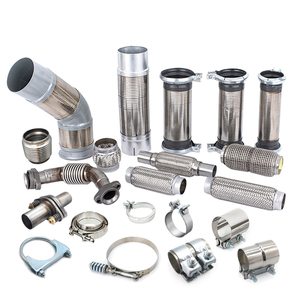


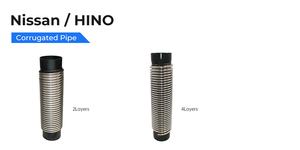
















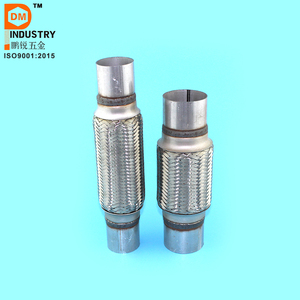

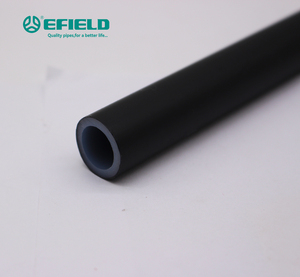



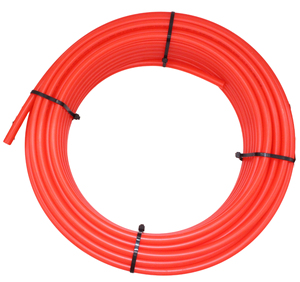





















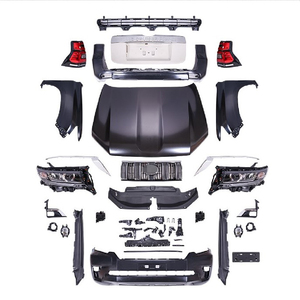


















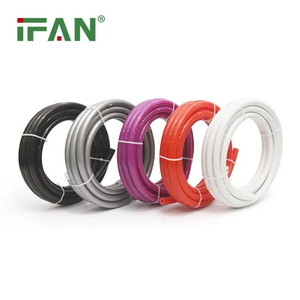










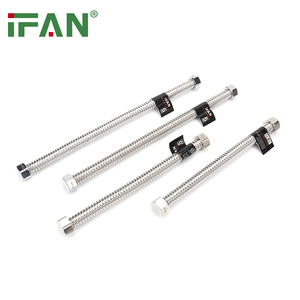





















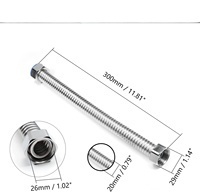














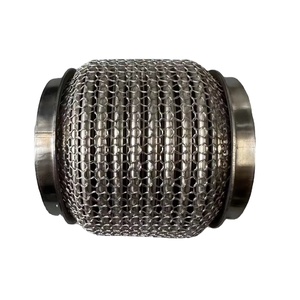












































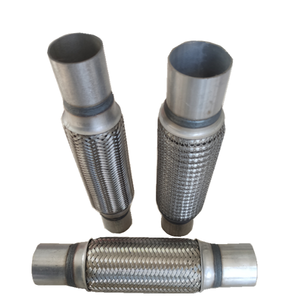

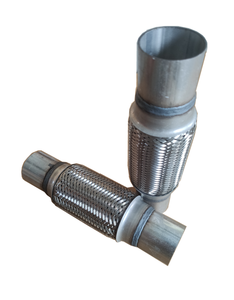










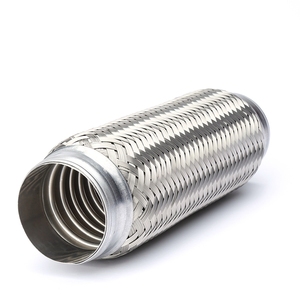


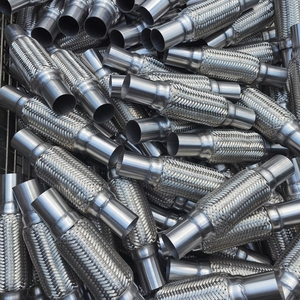
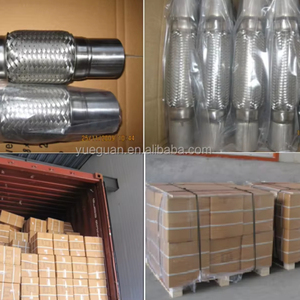

































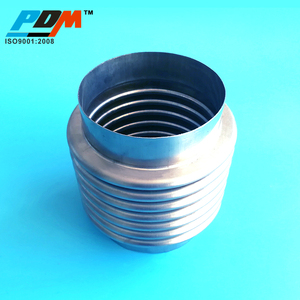



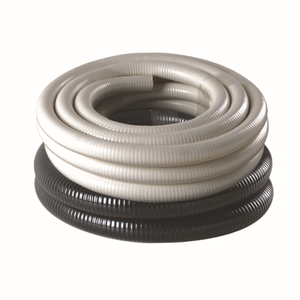








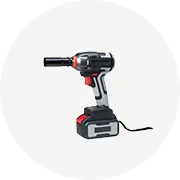










 浙公网安备 33010002000092号
浙公网安备 33010002000092号 浙B2-20120091-4
浙B2-20120091-4